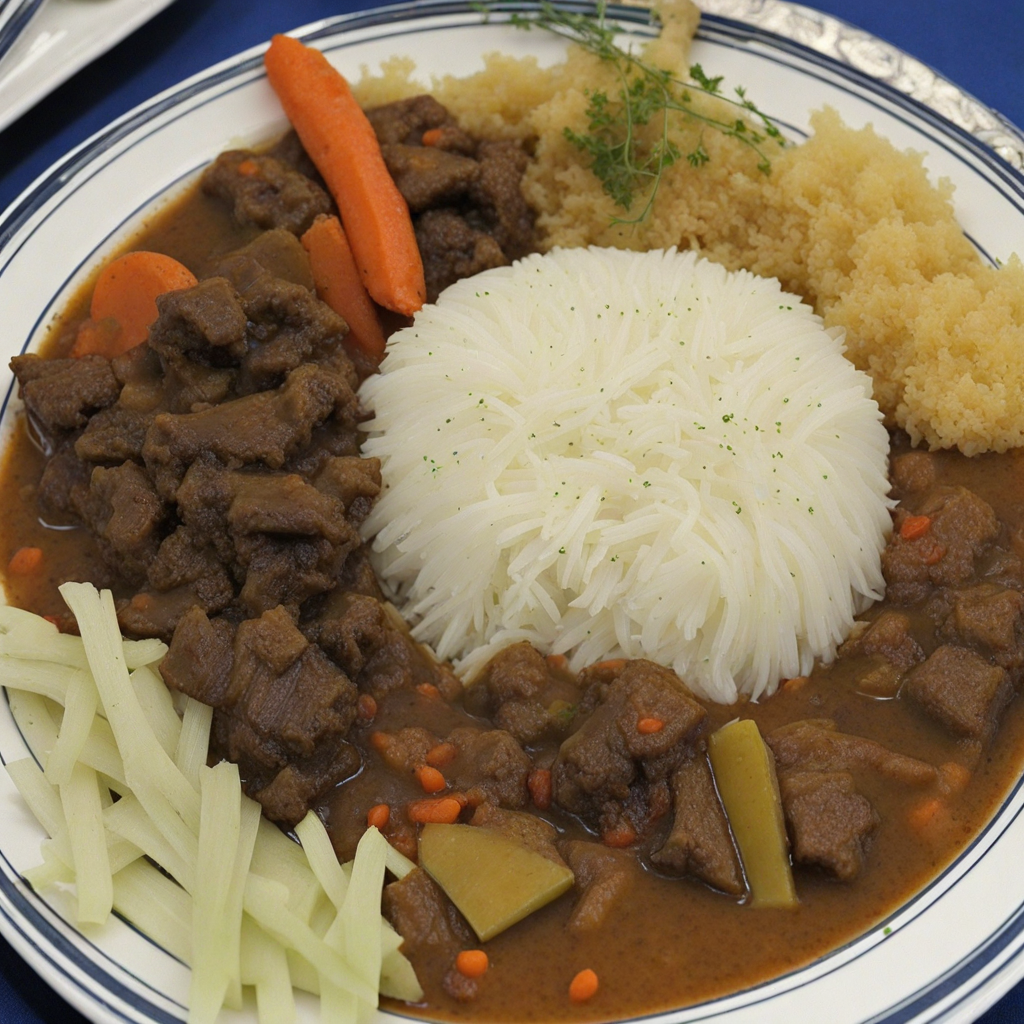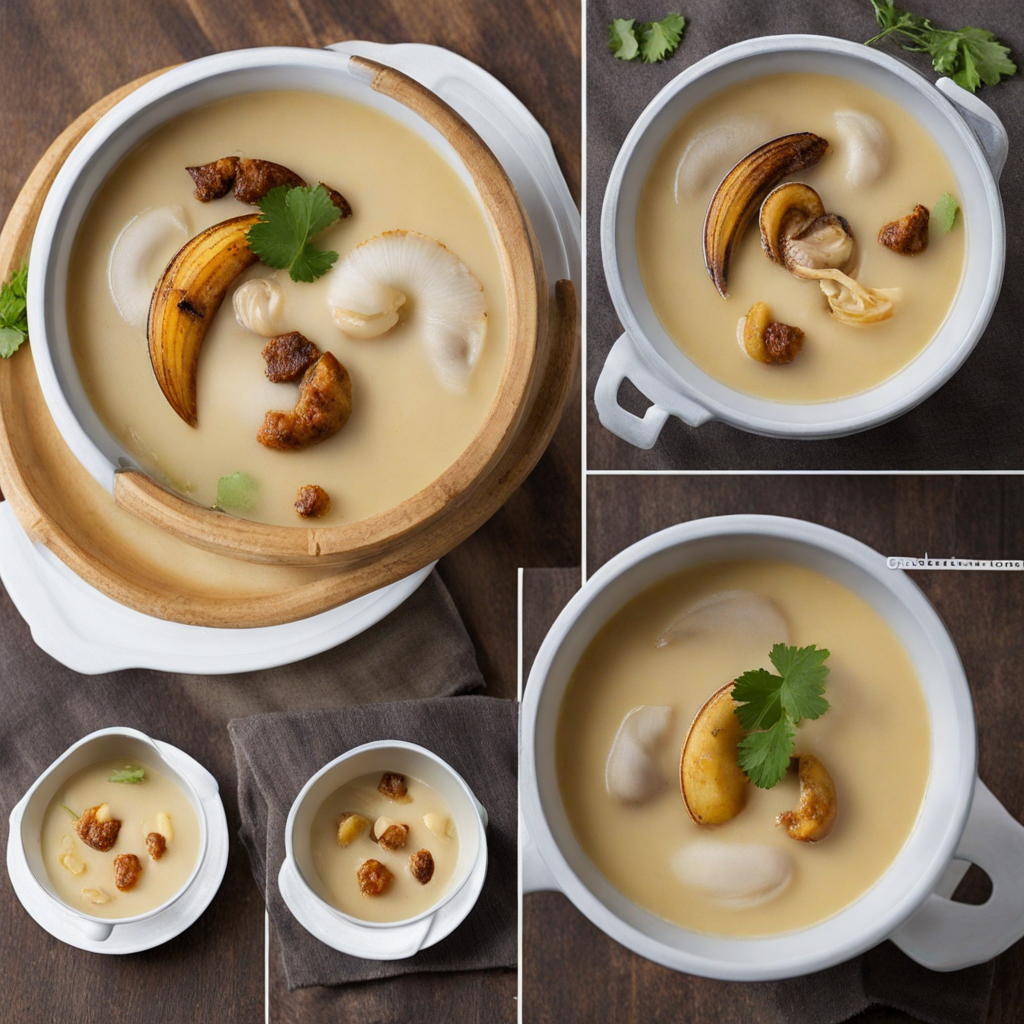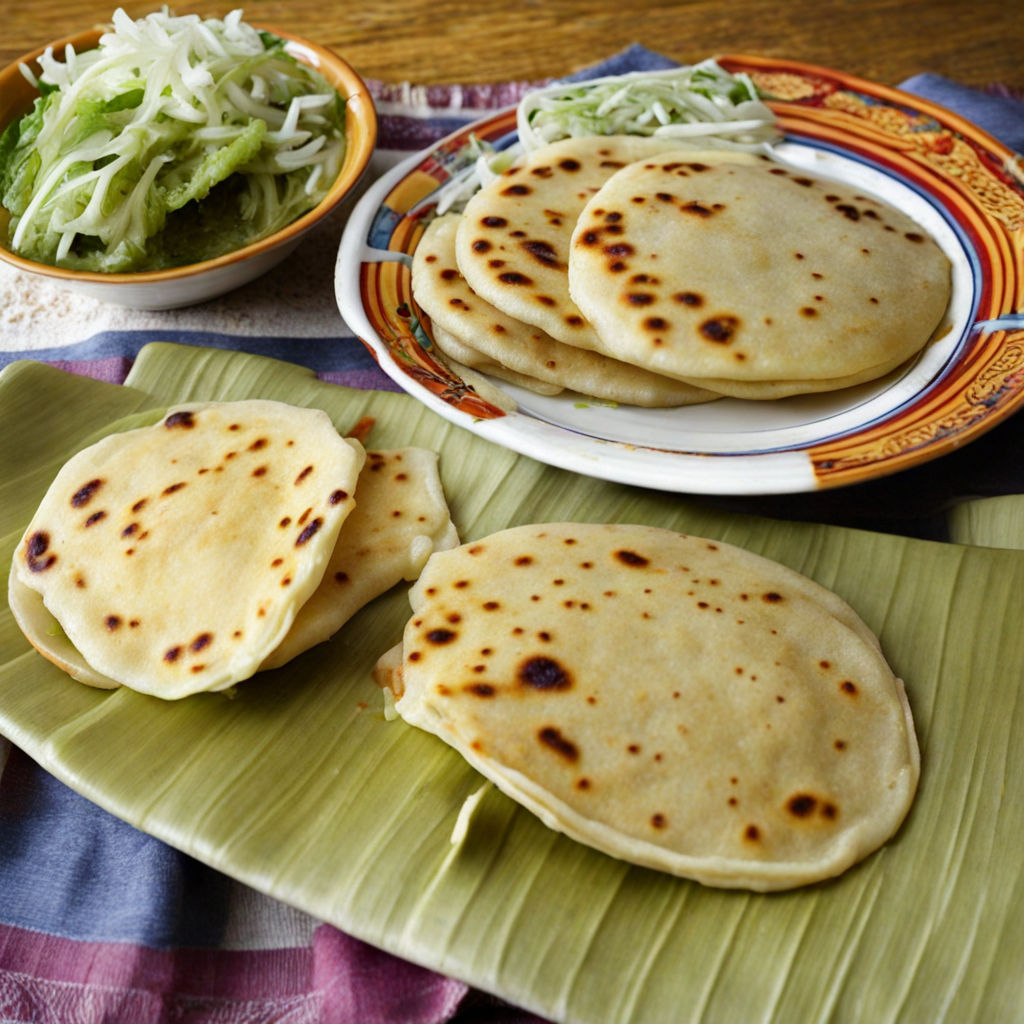Tapado Olanchano
Tapado Olanchano is a traditional Honduran dish that encapsulates the rich culinary heritage of the country, particularly from the region of Olancho. This hearty seafood stew is a delightful amalgamation of flavors and textures, primarily featuring fresh fish, shrimp, and a variety of shellfish. The dish is often prepared with a base of coconut milk, which imparts a creamy, tropical essence that beautifully complements the oceanic notes of the seafood. The combination of spices, including garlic, cilantro, and achiote, amplifies the flavors, creating a dish that is both aromatic and savory. The preparation of Tapado Olanchano is a communal affair, often bringing families and friends together to enjoy the cooking process. Vegetables such as plantains, yucca, and potatoes are typically added to the stew, providing a satisfying heartiness and making it a complete meal. The plantains, when cooked, offer a subtle sweetness that balances the savory elements, while yucca adds a unique texture that enhances the overall experience. Each spoonful delivers a burst of flavor, with the richness of the coconut milk mingling with the natural brininess of the seafood, making it a truly indulgent dish. Serving Tapado Olanchano is as much about presentation as it is about taste. The stew is often garnished with fresh herbs and served with a side of rice to soak up the flavorful broth. Accompanying the dish with warm tortillas allows for a delightful interaction of textures, as diners can scoop up the stew with the tortillas. This dish is not only a feast for the senses but also a celebration of the local ingredients and cooking traditions of Honduras, inviting anyone who tries it to embark on a culinary journey that is both comforting and exotic.
How It Became This Dish
The Culinary Legacy of Tapado Olanchano: A Taste of Honduras #### Origins Tapado Olanchano is a traditional Honduran dish that hails from the department of Olancho, a region known for its rich culinary heritage and agricultural bounty. The dish is a hearty seafood stew, primarily made with fish, shellfish, and an array of vegetables, often accompanied by coconut milk, which lends it a creamy texture and a unique flavor profile. The origins of Tapado Olanchano can be traced back to the indigenous Lenca and Garifuna peoples, whose culinary practices and ingredients laid the foundation for many traditional dishes in Honduras. The Garifuna, descendants of Afro-indigenous people, were particularly influential in the coastal areas of Honduras. Their culinary practices incorporated a variety of seafood, reflecting their close relationship with the sea. The Lenca, on the other hand, contributed ingredients like corn, beans, and various vegetables, which form the backbone of many Honduran dishes. The combination of these influences, along with the introduction of coconuts through trade and colonization, resulted in the development of Tapado Olanchano as we know it today. #### Cultural Significance Tapado Olanchano is more than just a dish; it is a cultural emblem for the people of Olancho and, by extension, for all Hondurans. The dish represents the fusion of indigenous and Afro-Caribbean culinary traditions, making it a symbol of national identity. It is often served during family gatherings and communal celebrations, embodying a spirit of togetherness and shared heritage. The preparation of Tapado is frequently a communal event, where family members come together to cook, sharing stories and laughter while preparing the meal. In Olancho, it is not uncommon to see Tapado served at local festivals, religious celebrations, and special occasions. The dish’s vibrant flavors and hearty ingredients make it a comforting choice, particularly during the rainy season when coastal communities may rely heavily on seafood. Its presence in these gatherings reinforces social bonds and underscores the importance of family and community in Honduran culture. #### Ingredients and Preparation The preparation of Tapado Olanchano varies from household to household, with each cook adding their personal touch. The essential ingredients typically include a variety of seafood such as fish (often tilapia or snapper), shrimp, and sometimes crab, along with vegetables like green plantains, yuca (cassava), and corn. The use of coconut milk is a defining feature, offering a creamy consistency and a slightly sweet flavor that balances the dish's savory elements. To prepare Tapado, the seafood is usually marinated with lime juice and spices to enhance the flavors. The base of the stew is created using sautéed onions, garlic, and bell peppers, which are then combined with tomatoes and the coconut milk. The vegetables are added next, followed by the marinated seafood, allowing all the ingredients to simmer together, creating a rich and aromatic stew. Some variations of Tapado also incorporate spices such as coriander, bay leaves, and achiote, which not only add depth to the flavor but also contribute to the dish’s vibrant color. The final product is a beautifully presented stew, often served with a side of rice or corn tortillas, making it a complete meal that is both satisfying and nourishing. #### Evolution Over Time As with many traditional dishes, Tapado Olanchano has evolved over time, influenced by factors such as globalization, migration, and changing culinary trends. In urban areas, the dish has seen adaptations that incorporate different types of seafood and ingredients not traditionally found in the rural Olancho region. For instance, chefs in larger cities may experiment with gourmet presentations or fusion elements, introducing international flavors while still paying homage to the dish’s roots. With the rise of food tourism in Honduras, Tapado Olanchano has gained recognition beyond its regional origins. Food enthusiasts and travelers are increasingly drawn to the authentic flavors of Honduran cuisine, leading to a revival of traditional dishes like Tapado. Restaurants across the country are now featuring Tapado on their menus, often accompanied by stories of its historical significance and cultural context. This has sparked a renewed interest in traditional cooking methods and the preservation of family recipes. Moreover, the growth of social media has allowed home cooks and professional chefs alike to share their versions of Tapado, creating a vibrant online community centered around Honduran cuisine. Through platforms like Instagram and YouTube, cooks showcase their culinary skills and share the stories behind their recipes, ensuring that the legacy of Tapado Olanchano continues to thrive. #### Modern-Day Appreciation Today, Tapado Olanchano is celebrated not just as a dish but as a representation of the resilience and richness of Honduran culture. It is often featured in culinary festivals, where local chefs showcase their interpretations, and cooking competitions highlight traditional recipes. This renewed appreciation has led to educational initiatives aimed at teaching younger generations about their culinary heritage. Efforts to promote traditional dishes like Tapado have also contributed to a broader movement to support local farmers and fishermen, emphasizing the importance of sustainable practices in food sourcing. By prioritizing locally sourced ingredients, cooks are not only preserving the authenticity of Tapado Olanchano but also supporting their communities. In conclusion, Tapado Olanchano is a dish that encapsulates the essence of Honduran culture, bringing together diverse culinary influences and celebrating the importance of family and community. As it continues to evolve and adapt to modern tastes, its historical roots and cultural significance remain firmly intact, ensuring that this beloved dish will be cherished for generations to come. Whether enjoyed in a family kitchen in Olancho or a trendy restaurant in Tegucigalpa, Tapado Olanchano remains a delicious testament to the rich tapestry of Honduran culinary heritage.
You may like
Discover local flavors from Honduras







